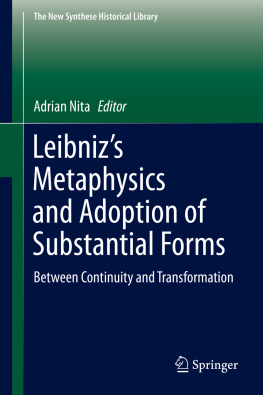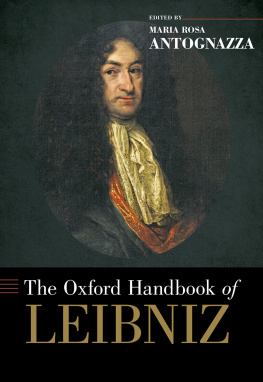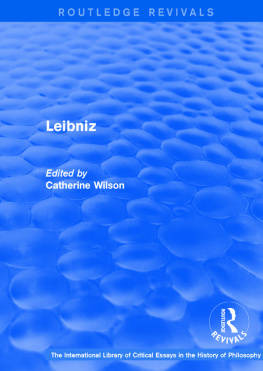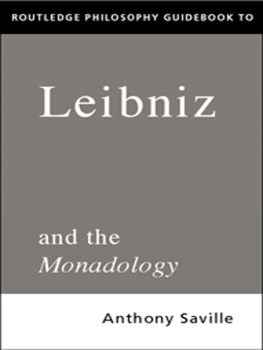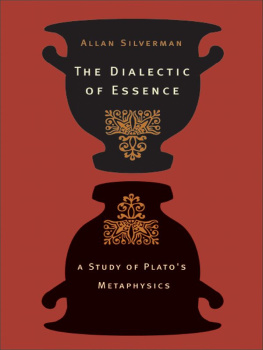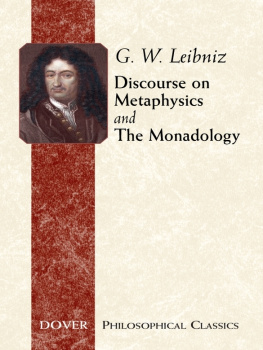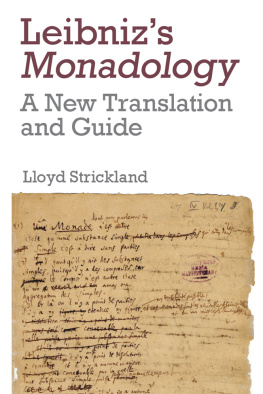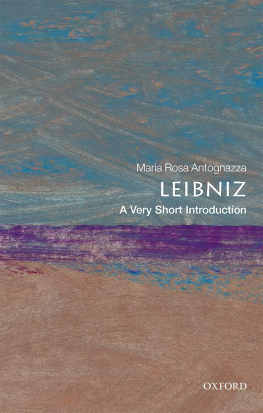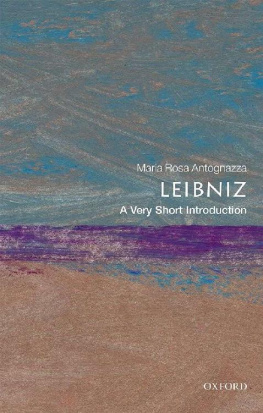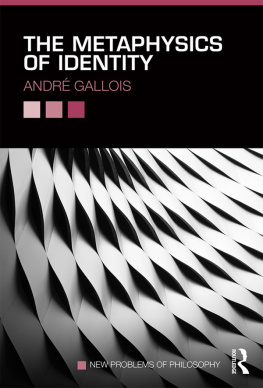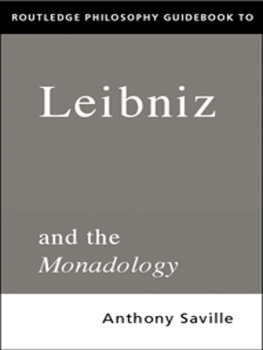1. Introduction. Leibnizs Metaphysics and the Adoption of Substantial Forms
In his letter to John Frederick, Duke of Brunswick-Hanover, from 1679, Leibniz embraces an apparently scholastic theory of substantial forms about which modern philosophers were very critical. This is the reason why the years 16781679 are important in Leibnizs development, for it was during this time that Leibniz, thinking within the frame of substantial forms, developed the theory of corporeal substance and laid the groundwork for his theory of monadology.
As is known, the mature structure of the theory of substantial forms appears in the Discourse on Metaphysics (1686) and in the writings and correspondence from middle years. The new theory of substance is based on identification of being in the primary sense with substance, like in Aristotle. However, even though the two philosophers consider the ontological principle along the same lines, Leibniz imparts some new elements to it: substance is what subsists in itself; it is the substratum of accidents and also responsible for activity in terms of primitive active and passive powers. In addition, substance is indivisible and, having an expressive or representational function, is something like the self.
Within this frame, the problem of the relationship between body and soul is put into a new perspective: the soul is the substantial form both in relation to the person and in relation to the body. Only if human beings have an immaterial principle, they have unity, being, and the other attributes mentioned above; only in virtue of being endowed with a nonmaterial principle is the body not a simple phenomenal aggregate.
Based on these theoretical foundations, Leibniz can extend the theory of substantial forms toward an elaborated theory of corporeal substances, and after 1695 toward his special theory of monadology. Let us note that in his late philosophical theory which adopted the monads, the term substantial form is pretty much non-existent. Even if the monad is something simple, an entelechy, or something soul-like, it is a metamorphosis of the substantial form; Leibniz avoids the expression substantial form because of the scholastic and extra-philosophical implications of this expression.
In addition to his adherence to modernism, scholasticism, atomism, Platonism etc., Leibniz also goes on his own path. He adopted modern philosophical ideas, but permanently renounced some aspects of them. He accepted many ideas of scholastics, but at the same time changed their meaning when using them in his philosophical system. Even when he declares his adherence to one party or another, his sentences have to be taken with a precaution because of his idiosyncratic interpretations. Leibniz was a modern philosopher, not only in the sense that he was a man of its time, but even more in the sense that he embraced from the beginning the philosophic and scientific aims of his contemporaries. Even though he did not study the modern philosophers at school, Leibniz was captivated, from a very early period of his life, by the possibility of mathematical knowledge of the world on the ground of the laws that governed nature. The appeal of the moderns (Descartes, Newton, Digby, Cordemoy, Gassendi etc.) to shape, size and motion leads to the understanding of the fact that the old philosophy, on the basis of qualities, essences and causes, cannot be in harmony with the mathematical approach of nature, grounded in quantity and becoming.
The initial modernism of Leibniz in the period 16611679 was prevalent with respect to his scholasticism. Leibniz declares that he was taken by the modern spirit already in 1661, feeling that there was no place for substantial forms in understanding of the world. According to Descartes, we sense colors, sounds, smells etc. in a confused fashion, but we sense shape, size and motion clearly and distinctly.
From 1668 on Leibniz sought a solution to a complex set of problems in the reconciliation between Aristotle and the moderns. He was ready to accept what was valuable in both approaches hoping in particular that he could resolve the mysterious nature of the body, that is, the question of relationship between body and soul, and the problem of Eucharist. The knowledge of the corporeal world in terms of shape, size and motion was adequate for understanding mechanical details, but it was insufficient from a metaphysical point of view because it excluded the principle that maintains a body in movement. Such a principle Leibniz saw first in God
God is an intelligent substance, endowed with the principle of action for all bodies in the universe; at the same time, he perceives his own action in himself.
In Leibnizs writings from 1671 to 1672, Theoria motus abstracti, Theoria motus concreti, Confessio philosophi, and others, the body appears in connection with the conatus. Leibniz argues that the extension cannot represent the essence of the body, as the modern followers of Descartes maintained. The essence of the body should be movement, which is more than extension. The body consists in movement and thinking consists in conatus. So, a body is a kind of a momentary mind, that is, a mind without memory.
In these texts Leibniz understood the mind ( mens ) as something simple, like a point and the center of a circle where the radii converge, but he needed an important addition, namely, that in order to be a principle of movement, the mind should be understood in terms of potentia , power or force. This identification of the active primitive power with the entelechy or soul begins in 16781679, that is, at the same time as the adoption of substantial forms. Correspondingly the body appears as what has resistance, impenetrability etc. and can be understood in the terms of passive derivative force.
Leibniz is interested in the capacity of the mind to move from one idea to another or, as he also says, from one perception to another. Something permanent is needed that will not change when the mind moves from an idea to another, and this permanent thing should be the same as that which provides unity to bodies and that underlies their substantial character; substance is not what has the attribute of thinking or extension, pace Descartes, but what is a primitive force of action, as Leibniz said in his letter to Foucher from 1675.
The evolution from the physics of bodies to the metaphysics of substance is present more deeply in his writing The Elements of Physics (16771678). Leibniz maintains that physics needs a metaphysical foundation, such as the principle of equality between cause and effect. This principle requires a treatment of force or potentia calculated through the quantity of the effect: the power ( potentia ) of the effect is equal to power ( potentia ) of the cause. Since powers or forces are not contained in purely material entities, one is led to consider the role of the forms or souls in this context, as well as the view that all is animated. If there is no soul or form, the body would have no being.
It is obvious that Leibnizs new concept of substance was in greater accord with piety than was the theory of substance promoted by Descartes. It is significant that from the beginning Leibniz tried to find an element that would complete the mechanical philosophy from this point of view. In the Demonstrationes catholicae (16681669), where Leibniz formulates his philosophical and theological program, he demands that there should be an incorporeal principle to ground the mechanical qualities of bodies. This principle plays an important role in Leibnizs demonstration of Gods existence and immortality, but also in his seeking for an agreement between the Catholic and Protestant doctrines about Eucharist. Leibnizs adoption of substantial forms is clearly an important step in his rational justification of belief. In his preoccupation for metaphysics, theology, science, and law, the justification of belief and the new mechanic are the themes which are constantly present.

